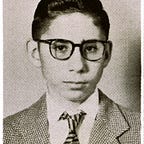Making Love to a Double Bass
Many who might read this blog know that my friend Portland baroque bassist Curtis Daily comes often to Vancouver to play with Early Music Vancouver. We host him and it has been many years now since he stopped being someone we host and he is simply a dear friend. His bass is parked on our living room. No musician would ever leave a musical instrument in a car (in his case a Prius) no matter how large.
Today he carried (he told me that he has lifted his bass at least 4700 times) his instrument up the stairs to our piano room where our model/photographer friend Jessica Venturi Timmins posed for us with the bass. This was not easy as the room is not large. And that bass is heavy. Daily is a quick learner in photography and the lesson today was the use of the grid spot in its role as a hair light. We had several problems avoiding a few reflections on the bass (some look attractive and natural).
The Double Bass — Patrick Suskind — Short Film
THE STAGE: ‘DOUBLE BASS’
By Walter Goodman
- Nov. 28, 1985 — New York Times
IF you have always wanted to see a man make love to a double bass, you can now satisfy the craving in Brooklyn. The scene is a funny high point of ‘’Double Bass,’’ the German writer Peter Suskind’s play for one voice and one instrument, the opening production at the New Theater of Brooklyn’s new theater at 465 Dean Street. Since the work, fluidly translated by Eric Overmyer and Harry Newman, proceeds generally along a level line without many highs, much of the credit for an entertaining evening must go to the soloist, Boyd Gaines.
Speaking directly to the audience between swigs from beer bottles, the bearded and bespectacled double bassist begins by extolling his instrument, with which he shares his small, thoroughly soundproofed apartment. He hails it as the most important in the orchestra: ‘’No double bass, no music!’’
Before long, however, his mood changes, and he is reviling himself for being bound to so awkward an object, when really he is a trombonist at heart. ‘’It’s a catastrophe,’’ he mutters, firing up his indignation, ‘’more of an obstacle than an instrument.’’ He calls it ‘’a fat old woman’’ and anguishes over his ‘’incessant incestuous intercourse’’ with it, which he analyzes as a symbolic violation of his mother.
Mr. Gaines draws considerable humor from his monologue, particularly when he is mocking a double bass passage from a recorded piece by Dittersdorf, throwing darts at a portrait of Wagner and banging his shins on his ‘’pachyderm of an instrument.’’ If there is a weakness in his appealing performance, it is a failure to get very deeply into the looniness of the nameless double bassist. The play, though an intriguing literary conception, is not highly dramatic, and the cool direction of Kent Paul tends to mute the dissonance of the character, who thinks of himself as ‘’a conservative man,’’ praising ‘’order, discipline, leadership,’’ even as he rails at the hierarchy that keeps him in the back row of the state orchestra. ‘’I’m alone a lot,’’ he says, in a desperate understatement.
The intimations of craziness are plainly there, in the monologuist’s frenetic veering from self-admiration to self-abasement, in his fears of a world whose cacophony assaults us when he opens a window. Yet the character is a bit too much on the surface; the underlying turmoil does not reach the stage. Despite outbursts of rage and exasperation, the deeper reverberations of a distraught mind — the kind of sound that one associates with the double bass — are rarely felt in these notes from the underground.
Mr. Gaines and the play are at their strongest when the double bassist regales us with his love for a soprano named Sarah, who has never even glanced his way. Fiddle as beautifully as he may, no one pays attention. The orchestra is no better than his apartment — ‘’I can scream as much as I want to in here. No one can hear me.’’ He laments that his instrument is not capable of playing a single note that his beloved can sing, and he works up his imagination to a moment, as the orchestra is getting ready to perform to a packed house, when he will cry out her name, ‘’Sarah!’’ An instant later, he is condemning her for going out to a fish restaurant with a tenor. Even in his fantasies, he is left to share his life with the double bass. It is at once his security blanket, his cross and, thanks to its voluptuous shape, his sexual object.
Mr. Gaines moves as smoothly from obsession to obsession as he does from underwear to formal attire for the orchestra’s evening performance, a night out together for him and his inseparable companion. Although the work provides few virtuoso cadenzas, his resonant voice and agile body make a versatile instrument and he delivers a pleasing solo. Sex and Violins THE DOUBLE BASS, by Patrick Suskind; translated by Eric Overmyer and Harry Newman; directed by Kent Paul; sets by William Barclay; costumes by Jared Aswegan; lighting by Philip Monat; sound by Tom Gould; production stage manager, Louis D. Pietig. Presented by the New Theater of Brooklyn, Deborah J. Pope, artistic director. At 465 Dean Street, Brooklyn. The Double BassistBoyd Gaines
